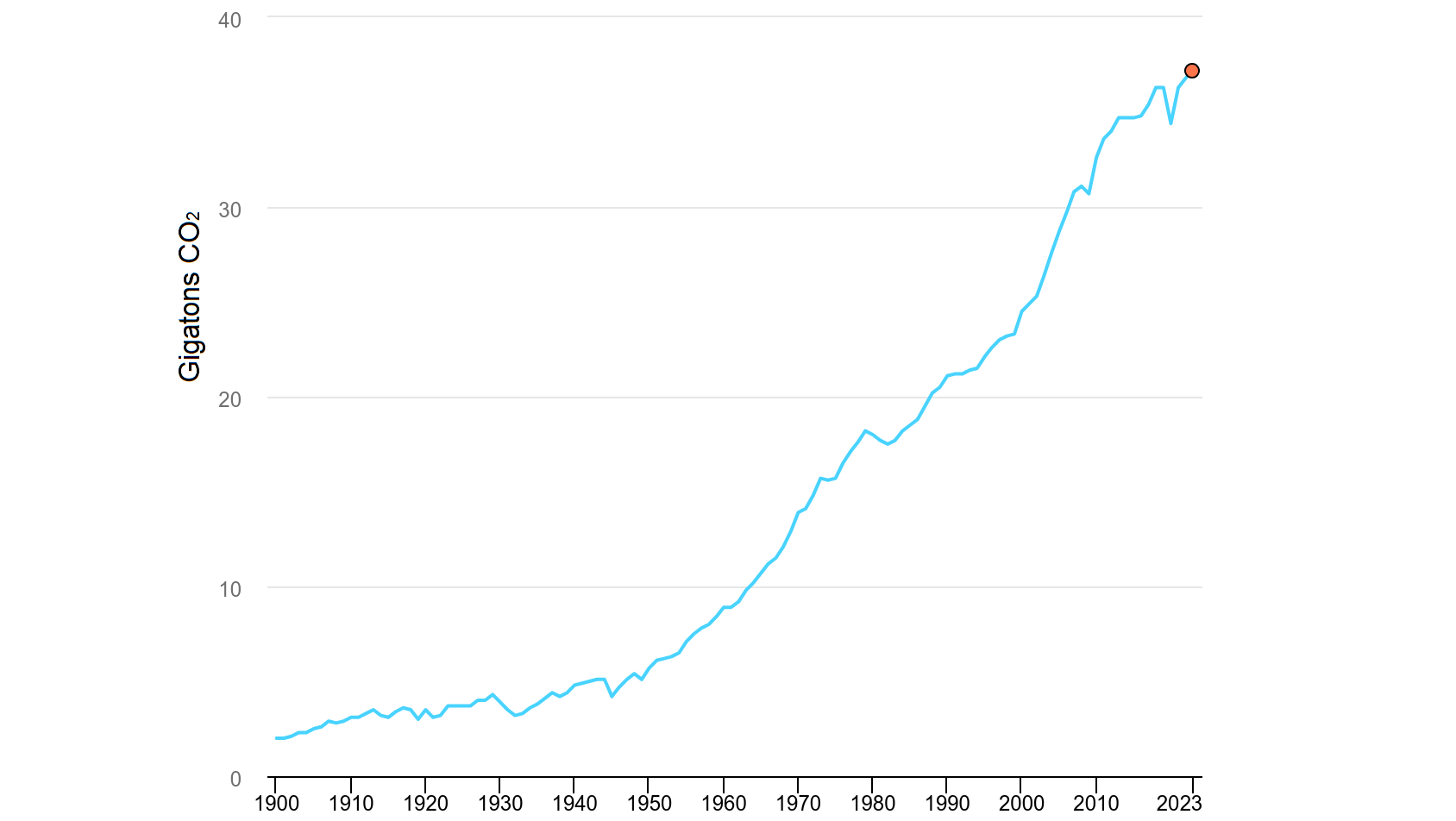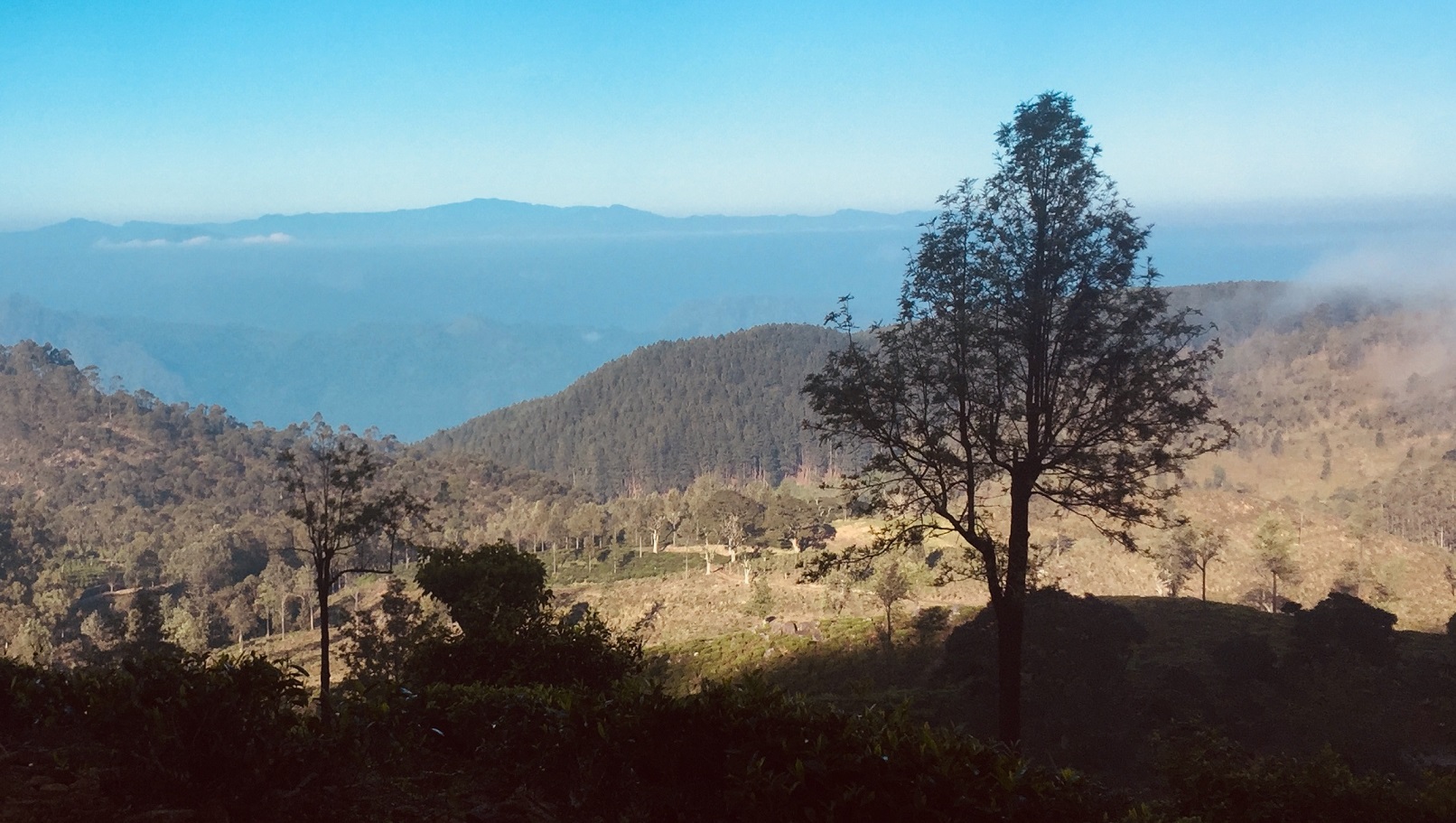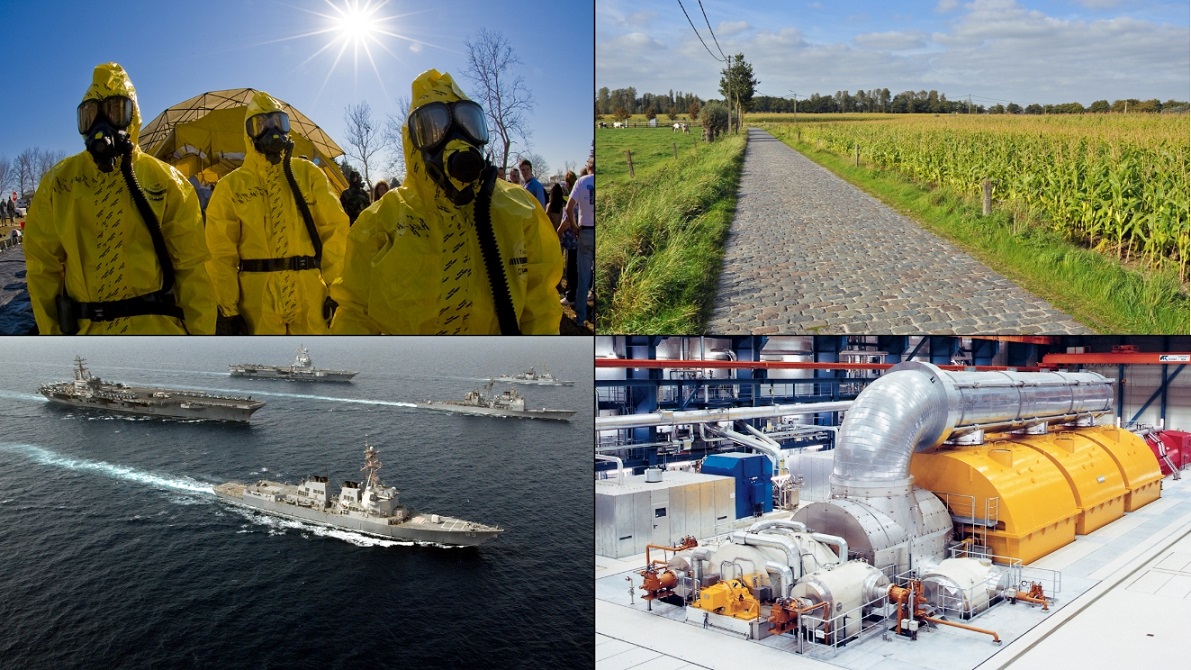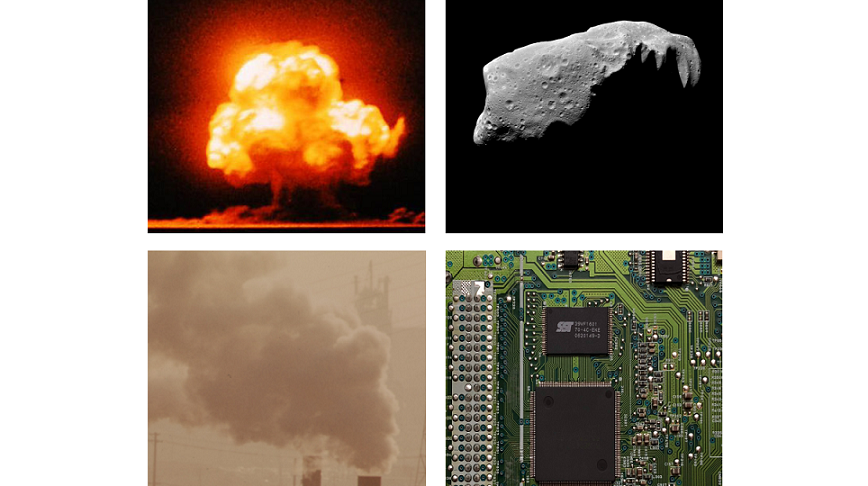Cross-Risk Systems
Addressing the totality of global catastrophic risk requires a holistic approach that considers the ways in which the risks are interconnected with each other. This includes analysis of the risks themselves and the opportunities to reduce them.
An Introduction to Cross-Risk Systems
In 2020, global carbon dioxide emissions decreased by over 5%, or almost 2 gigatons. It was the largest ever decline as measured in gigatons, and the largest percentage decline since the 1940s. The cause was the COVID-19 pandemic, which prompted lockdowns and other measures intended to slow the spread of the disease, and which inadvertently also had major environmental implications. It shows how global catastrophes can be interconnected to each other. So does the 1940s emissions decline, which was caused by World War II.

Of course, wars and pandemics are not a good way to approach the policy goal of reducing greenhouse gas emissions. The aim should be to avoid any catastrophe, not to use one catastrophe as a means of avoiding another. Nonetheless, it is important for climate policy to account for the possible effects of catastrophes, and indeed some climate policy analysis does. The same applies for other global catastrophic risks: it is always important to account for interconnections with other global catastrophic risks.
Unfortunately, work on global catastrophic risk is often done on individual risks in isolation from each other. This “siloing” approach is part of a broader trend in research and policy in which the focus is on narrow details and not on the whole picture. The narrow approach enables a division of labor in which specialists can pursue sophisticated work on specific topics. However, a broader, more systemic and holistic approach is needed to handle interconnections between the topics and, more generally, to see the forest for the trees.

There are several important reasons to pursue a holistic, systemic, cross-cutting approach to global catastrophic risk:
* Cascading scenarios in which one global catastrophe causes another. For example, an initial catastrophe could induce a catastrophic failure of stratospheric geoengineering.
* Institutions that can address multiple risks. For example, governments can enhance and streamline their operations through all-hazards institutions covering some or all global catastrophic risks.
* Actions that can reduce one risk while increasing another. For example, proposals to use nuclear explosives to counter Earthbound asteroids could inadvertently increase nuclear war risk.
* Actions that can concurrently reduce multiple risks. For example, refuges to protect isolated populations from harm could ensure their survival through a range of global catastrophe scenarios.

Cross-risk analysis is at the core of GCRI’s raison d’être. GCRI was specifically founded as an organization dedicated to studying the totality of global catastrophic risk in order to identify synergies and tradeoffs between the risks and above all to develop the best ways of reducing them. Though our funding has mainly been for targeted work on specific risks, we have nonetheless advocated for and contributed to a holistic, systemic approach to global catastrophic risk.
Image credits: CO2 emissions chart: International Energy Agency; tree and forest: SiddharthSL; hazmat: U.S. Air Force; crops: Marc Ryckaert; naval fleet: U.S. Navy; turbogenerator: Siemens
Featured GCRI Publications on Cross-Risk Systems
Whereas government policy for global catastrophic risk often addresses one risk at a time, this report argues that governments should pursue policies that address multiple global catastrophic risks at a time. All-hazards policies would leverage similarities and linkages between the risks to achieve more benefits for reducing the risk.
Atomically precise manufacturing (APM) is a hypothetical future technology that could have dramatic societal impacts. This paper, published in the journal Futures, assesses the net societal impacts of APM across six sectors: general material wealth, environmental issues, military affairs, surveillance, artificial intelligence, and space travel.
Integrated assessment is an interdisciplinary analysis of a topic that integrates multiple lines of research. This paper, published in a UCLA workshop proceedings, presents a concept for and some initial work towards an integrated assessment of global catastrophic risk, developed over several years by GCRI.
Full List of GCRI Publications on Cross-Risk Systems
Baum, Seth, 2025. Democratic participation and global catastrophic risk. GCRI Commentary 2025-4, 30 April.
Baum, Seth, 2025. Advance world peace to address global catastrophic risk? GCRI Commentary 2025-2, 11 April.
Sepasspour, Rumtin, 2023. All-hazards policy for global catastrophic risk. Global Catastrophic Risk Institute Technical Report 23-1.
Baum, Seth D., 2023. Assessing natural global catastrophic risks. Natural Hazards, vol. 115, no. 3 (February), pages 2699-2719, DOI 10.1007/s11069-022-05660-w.
Baum, Seth D., 2022. Book review: The Precipice: Existential Risk and the Future of Humanity. Risk Analysis, vol. 42, issue 9 (September), pages 2122-2124, DOI 10.1111/risa.13954.
Owe, Andrea and Seth D. Baum, 2021. The ethics of sustainability for artificial intelligence. In Philipp Wicke, Marta Ziosi, João Miguel Cunha, and Angelo Trotta (Editors), Proceedings of the 1st International Conference on AI for People: Towards Sustainable AI (CAIP 2021), Bologna, pages 1-17, DOI 10.4108/eai.20-11-2021.2314105.
Baum, Seth D. and Andrea Owe, 2023. Artificial intelligence needs environmental ethics. Ethics, Policy, & Environment, vol. 26, no. 1, pages 139-143, DOI 10.1080/21550085.2022.2076538.
Galaz, Victor, Miguel A. Centeno, Peter W. Callahan, Amar Causevic, Thayer Patterson, Irina Brass, Seth Baum, Darryl Farber, Joern Fischer, David Garcia, Timon McPhearson, Daniel Jimenez, Brian King, Paul Larcey, and Karen Levy, 2021. Artificial intelligence, systemic risks, and sustainability. Technology in Society, vol. 67 (November), article 101741, DOI 10.1016/j.techsoc.2021.101741.
Baum, Seth D., 2021. Accounting for violent conflict risk in planetary defense decisions. Acta Astronautica, vol. 178 (January), pages 15-23, DOI 10.1016/j.actaastro.2020.08.028.
Baum, Seth D., Robert de Neufville, Anthony M. Barrett, and Gary Ackerman, 2022. Lessons for artificial intelligence from other global risks. In Maurizio Tinnirello (editor), The Global Politics of Artificial Intelligence. Boca Raton: CRC Press, pages 103-131.
Baum, Seth D., 2019. Preparing for the unthinkable – Book review: End Times: A Brief Guide to the End of the World. Science, vol. 364, no. 6459 (September 20), page 1254, DOI 10.1126/science.aay4219
Baum, Seth D., 2019. Risk-risk tradeoff analysis of nuclear explosives for asteroid deflection. Risk Analysis, vol. 39, no. 11 (November), pages 2427-2442, DOI 10.1111/risa.13339.
Umbrello, Steven and Seth D. Baum, 2018. Evaluating future nanotechnology: The net societal impacts of atomically precise manufacturing. Futures, vol. 100 (June), pages 63-73, DOI 10.1016/j.futures.2018.04.007.
Baum, Seth D., 2018. Uncertain human consequences in asteroid risk analysis and the global catastrophe threshold. Natural Hazards, vol. 94, no. 2 (November), pages 759-775, DOI 10.1007/s11069-018-3419-4.
Baum, Seth D. and Anthony M. Barrett, 2017. Towards an integrated assessment of global catastrophic risk. In B.J. Garrick (editor), Proceedings of the First Colloquium on Catastrophic and Existential Risk, Garrick Institute for the Risk Sciences, University of California, Los Angeles, pages 41-62.
Baum, Seth D., David C. Denkenberger, and Joshua M. Pearce, 2016. Alternative foods as a solution to global food supply catastrophes. Solutions, vol. 7, no. 4, pages 31-35.
Baum, Seth, 2015. Japan should restart more nuclear power plants. Bulletin of the Atomic Scientists, 20 October.
Baum, Seth D., 2015. The far future argument for confronting catastrophic threats to humanity: Practical significance and alternatives. Futures, vol. 72 (September), pages 86-96, DOI 10.1016/j.futures.2015.03.001.
Baum, Seth, 2015. Antinuclear Austria should lead the way on nuclear power. Scientific American Blogs, 29 September.
Baum, Seth, 2015. Should nuclear devices be used to stop asteroids? Bulletin of the Atomic Scientists, 17 June.
Baum, Seth D., David C. Denkenberger, Joshua M. Pearce, Alan Robock, and Richelle Winkler, 2015. Resilience to global food supply catastrophes. Environment Systems and Decisions, vol. 35, no. 2 (June), pages 301-313, DOI 10.1007/s10669-015-9549-2.
Baum, Seth, 2015. What are the best ways to prevent global catastrophe? Institute for Ethics and Emerging Technologies, 26 February.
Baum, Seth D., 2014. The great downside dilemma for risky emerging technologies. Physica Scripta, vol. 89, no. 12 (December), article 128004, DOI 10.1088/0031-8949/89/12/128004.
Baum, Seth and Grant Wilson, 2013. How to create an international treaty for emerging technologies. Institute for Ethics and Emerging Technologies, 21 February.
Baum, Seth, 2013. When global catastrophes collide: The climate engineering double catastrophe. Scientific American Blogs, 6 February.
Baum, Seth, 2013. Seven reasons for integrated emerging technologies governance. Institute for Ethics and Emerging Technologies, 23 January.
Baum, Seth D., Timothy M. Maher, Jr., and Jacob Haqq-Misra, 2013. Double catastrophe: Intermittent stratospheric geoengineering induced by societal collapse. Environment Systems and Decisions, vol. 33, no. 1 (March), pages 168-180, DOI 10.1007/s10669-012-9429-y.
Wilson, Grant, 2012. Emerging technologies: Should they be internationally regulated? Institute for Ethics and Emerging Technologies, 21 December.
Wilson, Grant S., 2013. Minimizing global catastrophic and existential risks from emerging technologies through international law. Virginia Environmental Law Journal, vol. 31, no. 2, pages 307-364.
An Introduction to Cross-Risk Systems
In 2020, global carbon dioxide emissions decreased by over 5%, or almost 2 gigatons. It was the largest ever decline as measured in gigatons, and the largest percentage decline since the 1940s. The cause was the COVID-19 pandemic, which prompted lockdowns and other measures intended to slow the spread of the disease, and which inadvertently also had major environmental implications. It shows how global catastrophes can be interconnected to each other. So does the 1940s emissions decline, which was caused by World War II.

Of course, wars and pandemics are not a good way to approach the policy goal of reducing greenhouse gas emissions. The aim should be to avoid any catastrophe, not to use one catastrophe as a means of avoiding another. Nonetheless, it is important for climate policy to account for the possible effects of catastrophes, and indeed some climate policy analysis does. The same applies for other global catastrophic risks: it is always important to account for interconnections with other global catastrophic risks.
Unfortunately, work on global catastrophic risk is often done on individual risks in isolation from each other. This “siloing” approach is part of a broader trend in research and policy in which the focus is on narrow details and not on the whole picture. The narrow approach enables a division of labor in which specialists can pursue sophisticated work on specific topics. However, a broader, more systemic and holistic approach is needed to handle interconnections between the topics and, more generally, to see the forest for the trees.

There are several important reasons to pursue a holistic, systemic, cross-cutting approach to global catastrophic risk:
* Cascading scenarios in which one global catastrophe causes another. For example, an initial catastrophe could induce a catastrophic failure of stratospheric geoengineering.
* Institutions that can address multiple risks. For example, governments can enhance and streamline their operations through all-hazards institutions covering some or all global catastrophic risks.
* Actions that can reduce one risk while increasing another. For example, proposals to use nuclear explosives to counter Earthbound asteroids could inadvertently increase nuclear war risk.
* Actions that can concurrently reduce multiple risks. For example, refuges to protect isolated populations from harm could ensure their survival through a range of global catastrophe scenarios.
Cross-risk analysis is at the core of GCRI’s raison d’être. GCRI was specifically founded as an organization dedicated to studying the totality of global catastrophic risk in order to identify synergies and tradeoffs between the risks and above all to develop the best ways of reducing them. Though our funding has mainly been for targeted work on specific risks, we have nonetheless advocated for and contributed to a holistic, systemic approach to global catastrophic risk.
Image credits: CO2 emissions chart: International Energy Agency; tree and forest: SiddharthSL; hazmat: U.S. Air Force; crops: Marc Ryckaert; naval fleet: U.S. Navy; turbogenerator: Siemens
Featured GCRI Publications on Cross-Risk Systems
Whereas government policy for global catastrophic risk often addresses one risk at a time, this report argues that governments should pursue policies that address multiple global catastrophic risks at a time. All-hazards policies would leverage similarities and linkages between the risks to achieve more benefits for reducing the risk.
Atomically precise manufacturing (APM) is a hypothetical future technology that could have dramatic societal impacts. This paper, published in the journal Futures, assesses the net societal impacts of APM across six sectors: general material wealth, environmental issues, military affairs, surveillance, artificial intelligence, and space travel.
Integrated assessment is an interdisciplinary analysis of a topic that integrates multiple lines of research. This paper, published in a UCLA workshop proceedings, presents a concept for and some initial work towards an integrated assessment of global catastrophic risk, developed over several years by GCRI.
Full List of GCRI Publications on Cross-Risk Systems
Baum, Seth, 2025. Democratic participation and global catastrophic risk. GCRI Commentary 2025-4, 30 April.
Baum, Seth, 2025. Advance world peace to address global catastrophic risk? GCRI Commentary 2025-2, 11 April.
Sepasspour, Rumtin, 2023. All-hazards policy for global catastrophic risk. Global Catastrophic Risk Institute Technical Report 23-1.
Baum, Seth D., 2023. Assessing natural global catastrophic risks. Natural Hazards, vol. 115, no. 3 (February), pages 2699-2719, DOI 10.1007/s11069-022-05660-w.
Baum, Seth D., 2022. Book review: The Precipice: Existential Risk and the Future of Humanity. Risk Analysis, vol. 42, issue 9 (September), pages 2122-2124, DOI 10.1111/risa.13954.
Owe, Andrea and Seth D. Baum, 2021. The ethics of sustainability for artificial intelligence. In Philipp Wicke, Marta Ziosi, João Miguel Cunha, and Angelo Trotta (Editors), Proceedings of the 1st International Conference on AI for People: Towards Sustainable AI (CAIP 2021), Bologna, pages 1-17, DOI 10.4108/eai.20-11-2021.2314105.
Baum, Seth D. and Andrea Owe, 2023. Artificial intelligence needs environmental ethics. Ethics, Policy, & Environment, vol. 26, no. 1, pages 139-143, DOI 10.1080/21550085.2022.2076538.
Galaz, Victor, Miguel A. Centeno, Peter W. Callahan, Amar Causevic, Thayer Patterson, Irina Brass, Seth Baum, Darryl Farber, Joern Fischer, David Garcia, Timon McPhearson, Daniel Jimenez, Brian King, Paul Larcey, and Karen Levy, 2021. Artificial intelligence, systemic risks, and sustainability. Technology in Society, vol. 67 (November), article 101741, DOI 10.1016/j.techsoc.2021.101741.
Baum, Seth D., 2021. Accounting for violent conflict risk in planetary defense decisions. Acta Astronautica, vol. 178 (January), pages 15-23, DOI 10.1016/j.actaastro.2020.08.028.
Baum, Seth D., Robert de Neufville, Anthony M. Barrett, and Gary Ackerman, 2022. Lessons for artificial intelligence from other global risks. In Maurizio Tinnirello (editor), The Global Politics of Artificial Intelligence. Boca Raton: CRC Press, pages 103-131.
Baum, Seth D., 2019. Preparing for the unthinkable – Book review: End Times: A Brief Guide to the End of the World. Science, vol. 364, no. 6459 (September 20), page 1254, DOI 10.1126/science.aay4219
Baum, Seth D., 2019. Risk-risk tradeoff analysis of nuclear explosives for asteroid deflection. Risk Analysis, vol. 39, no. 11 (November), pages 2427-2442, DOI 10.1111/risa.13339.
Umbrello, Steven and Seth D. Baum, 2018. Evaluating future nanotechnology: The net societal impacts of atomically precise manufacturing. Futures, vol. 100 (June), pages 63-73, DOI 10.1016/j.futures.2018.04.007.
Baum, Seth D., 2018. Uncertain human consequences in asteroid risk analysis and the global catastrophe threshold. Natural Hazards, vol. 94, no. 2 (November), pages 759-775, DOI 10.1007/s11069-018-3419-4.
Baum, Seth D. and Anthony M. Barrett, 2017. Towards an integrated assessment of global catastrophic risk. In B.J. Garrick (editor), Proceedings of the First Colloquium on Catastrophic and Existential Risk, Garrick Institute for the Risk Sciences, University of California, Los Angeles, pages 41-62.
Baum, Seth D., David C. Denkenberger, and Joshua M. Pearce, 2016. Alternative foods as a solution to global food supply catastrophes. Solutions, vol. 7, no. 4, pages 31-35.
Baum, Seth, 2015. Japan should restart more nuclear power plants. Bulletin of the Atomic Scientists, 20 October.
Baum, Seth D., 2015. The far future argument for confronting catastrophic threats to humanity: Practical significance and alternatives. Futures, vol. 72 (September), pages 86-96, DOI 10.1016/j.futures.2015.03.001.
Baum, Seth, 2015. Antinuclear Austria should lead the way on nuclear power. Scientific American Blogs, 29 September.
Baum, Seth, 2015. Should nuclear devices be used to stop asteroids? Bulletin of the Atomic Scientists, 17 June.
Baum, Seth D., David C. Denkenberger, Joshua M. Pearce, Alan Robock, and Richelle Winkler, 2015. Resilience to global food supply catastrophes. Environment Systems and Decisions, vol. 35, no. 2 (June), pages 301-313, DOI 10.1007/s10669-015-9549-2.
Baum, Seth, 2015. What are the best ways to prevent global catastrophe? Institute for Ethics and Emerging Technologies, 26 February.
Baum, Seth D., 2014. The great downside dilemma for risky emerging technologies. Physica Scripta, vol. 89, no. 12 (December), article 128004, DOI 10.1088/0031-8949/89/12/128004.
Baum, Seth and Grant Wilson, 2013. How to create an international treaty for emerging technologies. Institute for Ethics and Emerging Technologies, 21 February.
Baum, Seth, 2013. When global catastrophes collide: The climate engineering double catastrophe. Scientific American Blogs, 6 February.
Baum, Seth, 2013. Seven reasons for integrated emerging technologies governance. Institute for Ethics and Emerging Technologies, 23 January.
Baum, Seth D., Timothy M. Maher, Jr., and Jacob Haqq-Misra, 2013. Double catastrophe: Intermittent stratospheric geoengineering induced by societal collapse. Environment Systems and Decisions, vol. 33, no. 1 (March), pages 168-180, DOI 10.1007/s10669-012-9429-y.
Wilson, Grant, 2012. Emerging technologies: Should they be internationally regulated? Institute for Ethics and Emerging Technologies, 21 December.
Wilson, Grant S., 2013. Minimizing global catastrophic and existential risks from emerging technologies through international law. Virginia Environmental Law Journal, vol. 31, no. 2, pages 307-364.



